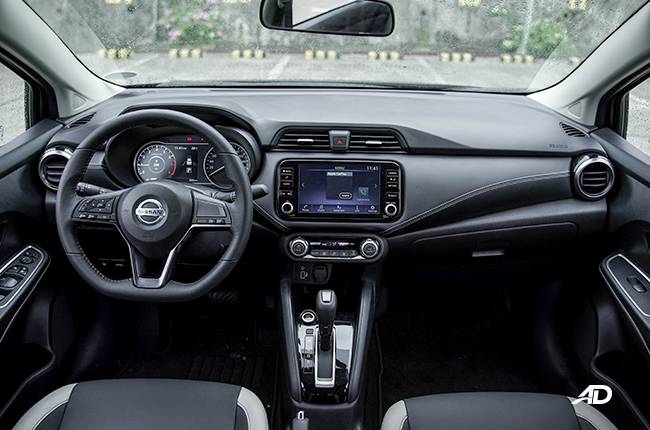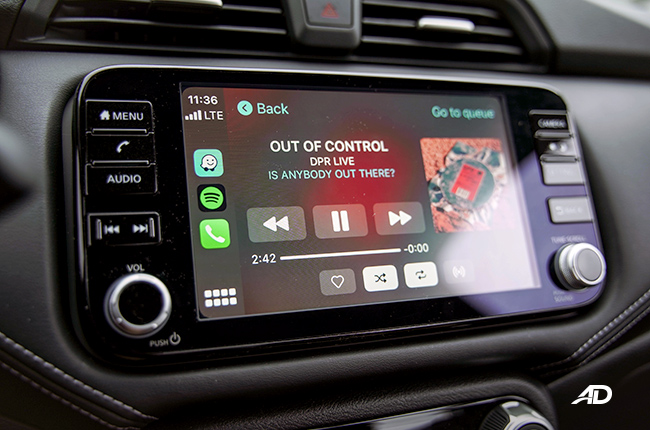
Let’s face it, subcompact sedans have become a little bit boring over the years. There were sparks of excitement throughout the years, but now most subcompacts tend to be rather expensive, uninspired, or just plain.
Is there any shred of excitement in the segment anymore? There was a few years ago from another brand, but that model has since been discontinued. Now, however, it’s Nissan’s turn to be the “exciting” one in the lineup with its Almera. However, does it have what it takes the break the mold? The Almera is incredibly underrated, perhaps because its spec sheet can only say so much, but from an experiential standpoint of driving, enjoying, and living with the model, it’s a different story and one that makes us ask: “Why aren’t there more of these out on the road?”
The 1.0-liter problem(?)

Remember the Ford Fiesta? The 1.0-liter EcoBoost motor was an award-winner worth shouting about but sadly, Ford decided to focus on bigger and better cars, axing the 1.0-liter from the lineup. As a value proposition, however, it was a perfect storm of power and torque with some added fuel economy to boot. However, we feel that in addition to some technical issues that Ford had in the past with this, it was also a case of marketing the car, in which it was tough to tell people that a 1.0-liter was better. Bigger is better, right?

It’s now Nissan’s time to shine. Where the Ford Fiesta didn’t do too well, perhaps Japanese reliability, engineering, and hardware could have been the key all along. While 1.0-liters don’t look as impressive on paper, you have to drive one to really get it, as it’s not all just about horsepower, but also about the transmission. You can buy this car with a 1.0-liter turbo motor paired to a five-speed manual transmission, or a CVT. The manual is the more fun option, but the CVT is definitely the more mature choice for most drivers, or rather, the more convenient choice.

The one issue that we’re seeing is Nissan’s version of a 1.0-liter turbo powerplant is actually a little underpowered, at least based on the spec sheet. We have to remember that specs aren’t the whole story when it comes to measuring performance. You also have to consider vehicle weight, transmission gear ratios, and also engine tuning. Peak performance figures aren’t the most reliable in terms of telling you how good a car will perform, and unfortunately, the peak 99 horsepower figure doesn’t seem to wow anyone. Based on the horsepower figure alone, we’re looking at about the same output as a 1.3-liter engine from a Toyota Vios with about 98 horses under the hood. That’s not bad at all considering that the Nissan is down in terms of displacement, but the traditional car buyers will raise an eyebrow at the 1.0-liter’s size and just go with what they know.

For us, however, this notion is outdated, and the benefits that downsizing and uprating a gasoline engine are clear nowadays, so much so that many crossovers and compact sedans have taken the turbocharged route. The net effect is that the turbo engines actually produce more than decent amounts of power, an abundance of torque, and potentially better fuel consumption figures compared to their naturally-aspirated counterparts.
Actual driving performance is great

What most people don’t realize is that manufacturers often shine a light over their eyes with peak horsepower figures, but the Almera is built to be different with a bulk of its power and torque reaching the ground earlier compared to its naturally-aspirated counterparts. Specs don’t tell the whole story, and just because a car has 119, 110, or 105 horsepower, doesn’t mean that all of it will be used a hundred percent of the time.
What the Nissan Almera gets right is that its engine is tuned for low-end peppy power and torque, which makes the drive a little more exciting from a standstill, and in places where a spritely engine is preferred. On a winding mountain road, or while traveling in the city, the 1.0-liter shines the best, delivering its maximum torque figure earlier in and punchier compared to its other rivals with naturally-aspirated engines.
Turbochargers in production cars are like magic. At least in the case of the Nissan Almera, there is little to no turbo lag that you will experience. It takes about a second for the power to surge, but it’s nothing like the turbos of old. In fact, the current state of the art in turbo technology has actually left naturally-aspirated engines gasping for air. We often feel that non-turbo gasoline engines are the ones that feel like they need to wind up to achieve a decent amount of power for overtaking.

The secret of the Almera is its torque figure. The 1.0-liter turbo may not have the top-end power of its rivals (not that it matters anyway), but it has the most amount of torque. The Almera has 152 Nm of torque with the CVT and 160 Nm of torque with the manual. The kicker is that, well, the engine’s torque kicks in much earlier than its other rivals, and it kicks a lot harder comparatively. We can go on and on about power, but it’s really torque that makes the world go round now. Just look at how capable diesel engines are in the Philippines, and how drivable they are regardless of their weight. Scale that down into a lighter and leaner chassis with the smoothness of gasoline and you have yourself a recipe for fun.
Safety at Speed
The peppy engine won’t set the world ablaze, but it’s still quick enough to get you into a bit of trouble so Nissan’s Intelligent Mobility suite is on board and ready for your use. Equipped with standard ABS and Traction Control, even the base model is prepared for the torque of the 1.0-liter turbo, just in case. If you want more, however, you can opt for the top-of-the-line variant that comes with Nissan’s Intelligent Around-View monitor, forward collision warning, intelligent emergency braking, blind-spot warning, rear cross-traffic alert, and also hill-start assist.
Truth be told, these systems won’t replace a seasoned and always attentive driver, but since none of us are perfect and there will always be a moment of inattention somewhere along the way, it’s nice to know that there are systems in place to keep you from getting into an accident. During our time with Nissan’s vehicles, the Around-View monitor, the forward collision warning, and the rear blind-spot warning were some of our stand-out and most-used features.
So why isn’t it more popular? Why is it underrated?

The problem that the Almera has is two-fold. The first is that the Almera in its previous generation wasn’t the best in terms of features, looks, and power. The previous generation definitely left something to be desired, and it seems that the Almera is still trying to ditch its previous reputation as a not-so-great sedan.
Now, forget the model prior. What’s here and now is the best-looking and most interesting Almera to date, and some of us in the team reckon that it’s a better drive and a better buy compared to the Toyota Vios. Whereas the Toyota sedan enjoys ubiquity and familiarity, Nissan offers a well-rounded package that can work not just for your basic needs, but for the stuff of the more exciting sort, which includes drives out of town just for the sake of driving.
The other thing that it has going against it, and probably the biggest reason why it’s underrated is because of the brand. Nissan’s not the biggest in the subcompact sedan segment, and while it may have carved out a reputation for itself with segment shakers like the Navara, Terra, and Kicks in the lineup, the Almera is fighting an uphill battle of sorts going up against cars that have an extremely loyal fan base like the Vios and the City.
However, we feel that the Almera deserves a little more praise and attention. If you notice, it’s the only turbocharged 1.0-liter now in the Philippines in its segment, it’s also one of the most equipped cars in terms of safety, and it’s arguably a sportier-looking car compared to its mature and plain rivals. The top-of-the-line model, from the start, was branded as a sporty-looking model, and there is truth to that. Basically, the Almera seems like it’s the most fun that you can have in the subcompact segment right now, based on looks, engine characteristics, and drive.
We definitely want to see more of these cars on the road, as we’ve had a blast wringing out the 1.0-liter for all the power and torque it has—trust us, specs don’t tell the whole story.
Latest Features
-
How to prepare your car for the Holidays / Featured Article
Here are our handy tips on how to keep you on the road and stress free this holiday season.
-
An all-electric future: The Porsche Macan Electric / Featured Article
Porsche’s Macan goes all-electric; it’s a new beast with an electrified heart, yet unmistakably Porsche in performance and spirit.
-
Which Kia should I buy? / Featured Article
We’re here to help you decide which Kia vehicle is best for you, whether it’s a sedan, crossover, or minivan.
Popular Articles
-
Electric Vehicles in the Philippines for under P1 million
Jerome Tresvalles · Aug 19, 2025
-
Top 3 Cars For Every Lifestyle—What Cars Are Right For You? | Behind a Desk
Caco Tirona · Apr 24, 2024
-
5 Tips to Maximize Fuel Efficiency
Jerome Tresvalles · Sep 09, 2024
-
Five driving habits that are draining your fuel tank
Jerome Tresvalles · Jun 24, 2025
-
Can engine braking harm your engine?
Jerome Tresvalles · Sep 11, 2025
-
Do electric cars even need maintenance?
Jerome Tresvalles · Oct 23, 2024
-
Best vehicles for an active outdoor lifestyle
Shaynah Miranda · Jul 25, 2024
-
How to drive different types of vehicle transmissions
May 23, 2024
-
5 easy ways to keep your car interior clean
Allysa Mae Zulueta · Nov 15, 2021
-
How to survive Metro Manila traffic
Earl Lee · Aug 16, 2022







